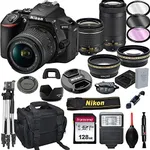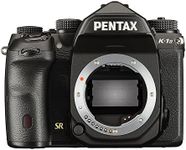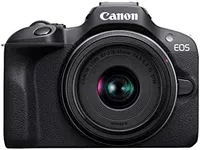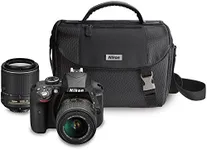Buying Guide for the Best Professional Dslr Cameras
Choosing the right professional DSLR camera can be a daunting task, but with the right approach, you can find the perfect fit for your needs. Start by understanding what you will primarily use the camera for, such as portrait photography, landscape photography, sports, or videography. This will help you prioritize certain features over others. Additionally, consider your level of expertise and how much you are willing to grow with the camera. Here are some key specifications to consider when selecting a professional DSLR camera.Sensor SizeThe sensor size is crucial because it affects the image quality, depth of field, and low-light performance. Full-frame sensors are larger and provide better image quality, especially in low light, making them ideal for professional use. APS-C sensors are smaller and more affordable, but they still offer excellent quality and are suitable for many types of photography. If you need the highest image quality and work in various lighting conditions, a full-frame sensor is the best choice. For those who need a balance between quality and cost, an APS-C sensor can be a good option.
MegapixelsMegapixels determine the resolution of your images. Higher megapixels mean more detail and the ability to print larger photos without losing quality. Cameras with 20-30 megapixels are generally sufficient for most professional needs, providing a good balance between file size and image quality. If you require extremely high detail for large prints or extensive cropping, consider cameras with 40+ megapixels. However, remember that higher megapixels also mean larger file sizes, which require more storage and processing power.
Autofocus SystemThe autofocus system is important for capturing sharp images, especially in fast-paced environments like sports or wildlife photography. Look for cameras with a high number of autofocus points and advanced tracking capabilities. Entry-level professional DSLRs may have around 50-100 autofocus points, while high-end models can have over 150. If you frequently shoot moving subjects, a more advanced autofocus system will be beneficial. For static subjects like portraits or landscapes, a less complex system may suffice.
ISO RangeThe ISO range indicates the camera's sensitivity to light. A wider ISO range allows for better performance in low-light conditions without introducing too much noise. Professional DSLRs typically offer ISO ranges from 100 to 51,200 or higher. If you often shoot in low-light environments, such as indoor events or night photography, a camera with a higher ISO range will be advantageous. For well-lit conditions, a standard ISO range will be adequate.
Frame RateThe frame rate, measured in frames per second (fps), determines how many images the camera can capture in a second. This is particularly important for action photography, such as sports or wildlife. Professional DSLRs usually offer frame rates between 5 to 20 fps. If you need to capture fast-moving subjects, look for a camera with a higher frame rate. For general photography, a lower frame rate will be sufficient.
Build Quality and Weather SealingBuild quality and weather sealing are important for durability and reliability, especially if you shoot in challenging environments. Professional DSLRs are often built with robust materials like magnesium alloy and feature weather sealing to protect against dust and moisture. If you frequently shoot outdoors or in harsh conditions, a camera with strong build quality and weather sealing is essential. For studio or controlled environments, these features may be less critical.
Video CapabilitiesIf you plan to use your DSLR for videography, consider its video capabilities. Look for features like 4K resolution, high frame rates, and advanced autofocus during video recording. Some professional DSLRs also offer features like log profiles and external microphone inputs for better audio quality. If video is a significant part of your work, prioritize these features. For primarily still photography, basic video capabilities may be sufficient.
Battery LifeBattery life is important for long shooting sessions, especially when you are on location without easy access to charging. Professional DSLRs typically offer longer battery life compared to entry-level models. Look for cameras that can shoot at least 800-1000 shots per charge. If you often shoot events or travel, a camera with longer battery life will be beneficial. For shorter sessions or studio work, battery life may be less of a concern.
Lens CompatibilityLens compatibility is crucial because it determines the range of lenses you can use with your camera. Professional DSLRs usually have a wide range of compatible lenses, including high-quality prime and zoom lenses. Consider the types of lenses you will need for your work, such as wide-angle for landscapes or telephoto for sports. Ensure the camera you choose has a good selection of lenses that meet your needs. If you already own lenses, check their compatibility with the new camera.
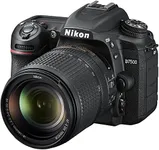
![Canon DSLR Camera [EOS 90D] with Bu](https://images-proxy.bestreviews.guide/kFEi5KP2PYJ3wMXMQ_Zv7U27skM=/0x150/https://m.media-amazon.com/images/I/41CT8Bz8kQL._AC_CX679_.jpg)

